How to Stop Von Miller in Five (Not-So-Simple) Steps

ENGLEWOOD, Co. — After watching Von Miller treat his Weeks 1 and 2 opponents like blocking dummies, raising his sack streak to nine in his last four games dating back to the AFC Championship, I started to wonder about the last team that stopped the Super Bowl MVP, or at least mitigated the damage. More importantly, how did they do it?
The folks at Pro Football Focus passed along two very un-Von performances from the 2015 regular season: the Week 6 game against the Browns, which Denver won in overtime, and Week 15 at Pittsburgh, a 34-27 Steelers comeback win. Miller’s combined stats: zero tackles, zero sacks.
On first glance, there was an obvious theme—quarterbacks Josh McCown and Ben Roethlisberger were getting the ball out of their right hands with unparalleled urgency. I brought this observation to Aqib Talib, who took advantage of one hastily thrown McCown pass in Week 6 and took it 63 yards to the house. Talib furrowed his brow and stared back quizzically at the premise of the story: How to Stop Von Miller.
“Common sense tells you that,” Talib said from the seat of his locker here at the team’s practice facility. “If you don’t want him to get you, get rid of the ball. That’s about all you can do.”
Turns out there’s more to it, and while it’s a tall task to slow down the best defensive player in football next to J.J. Watt, it’s not as hopeless as Talib would have you believe.
It all starts with the right tackle
That position is the centerpiece of any effort to minimize Miller and put up yards on the Broncos. Miller is most comfortable bending around the left corner or planting his left leg in the ground and driving a blocker into submission (See Reitz, Joe, Denver vs. Indy last week), so the right tackle on any opposing team sees the brunt of the work. Both Cleveland and Pittsburgh boasted tremendous players at the position last season in Mitchell Schwartz (who has since signed one of the most lucrative deals for a right tackle in NFL history, with Kansas City) and Marcus Gilbert, the former second-rounder signed to the Steelers through 2019.
Miller himself has a great deal of respect for Gilbert especially. Besides becoming fast friends at the 2011 Senior Bowl, Miller believes Gilbert is the best right tackle in football. “It’s a unique situation in Pittsburgh where they have their best offensive lineman, really one of the best offensive lineman in the NFL, playing right tackle,” Miller says. “He can go step-for-step with you, and what’s important is that he’s so strong.”
A trustworthy pass-blocker on the side traditionally reserved for your team's best run-blocking tackle is essential because it allows a play-caller to exercise the full breadth of his playbook without constantly providing assistance to the right tackle, in the form of chipping running backs and stay-at-home tight ends.
Gilbert and Schwartz are two of these rare humans. How can you tell?
The punch
The best way to slow down Von is to punch him in the chest with both hands. It’s a pre-emptive strike that prevents Miller from dipping his shoulder and turning the corner or digging into the blocker’s chest and driving him back. It’s risky, because there’s the danger that you fail to connect, and Von leaves you in the dust. Here’s Schwartz on the very first passing play of their meeting in Cleveland, going out of his way to set the tone.
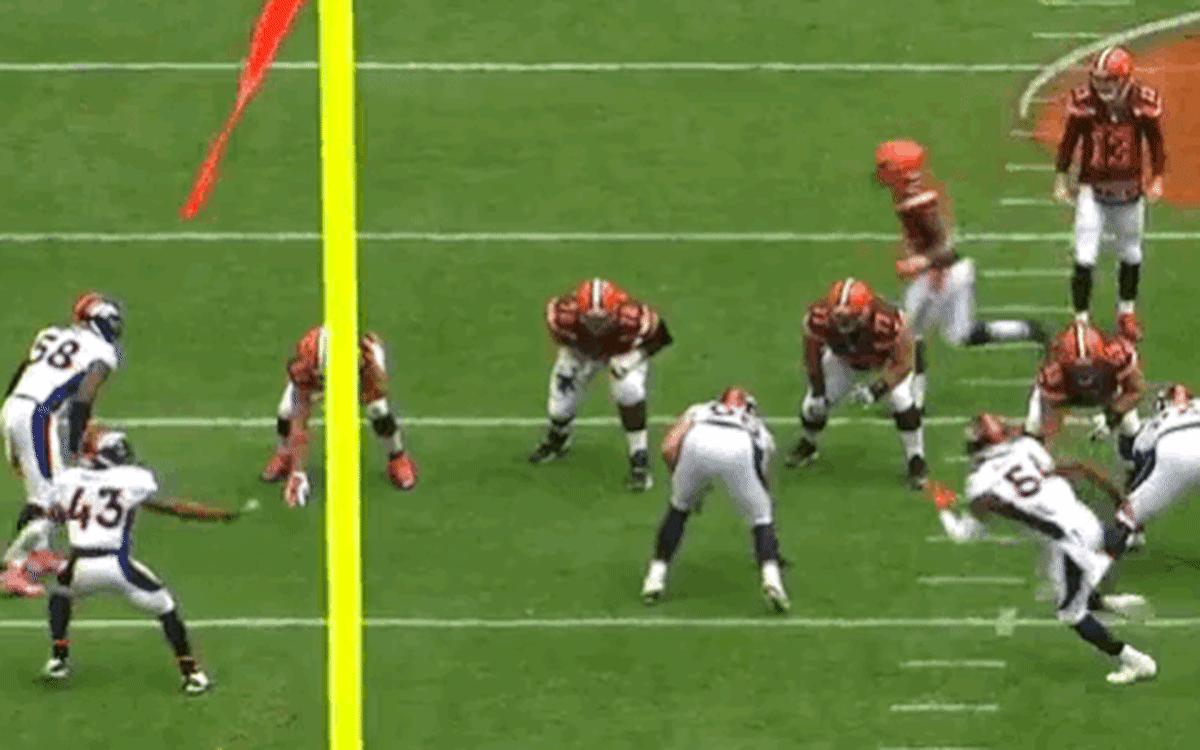
And here’s Gilbert in the second half of their matchup in December. He makes contact as early as possible, before Miller has an opportunity to get close.
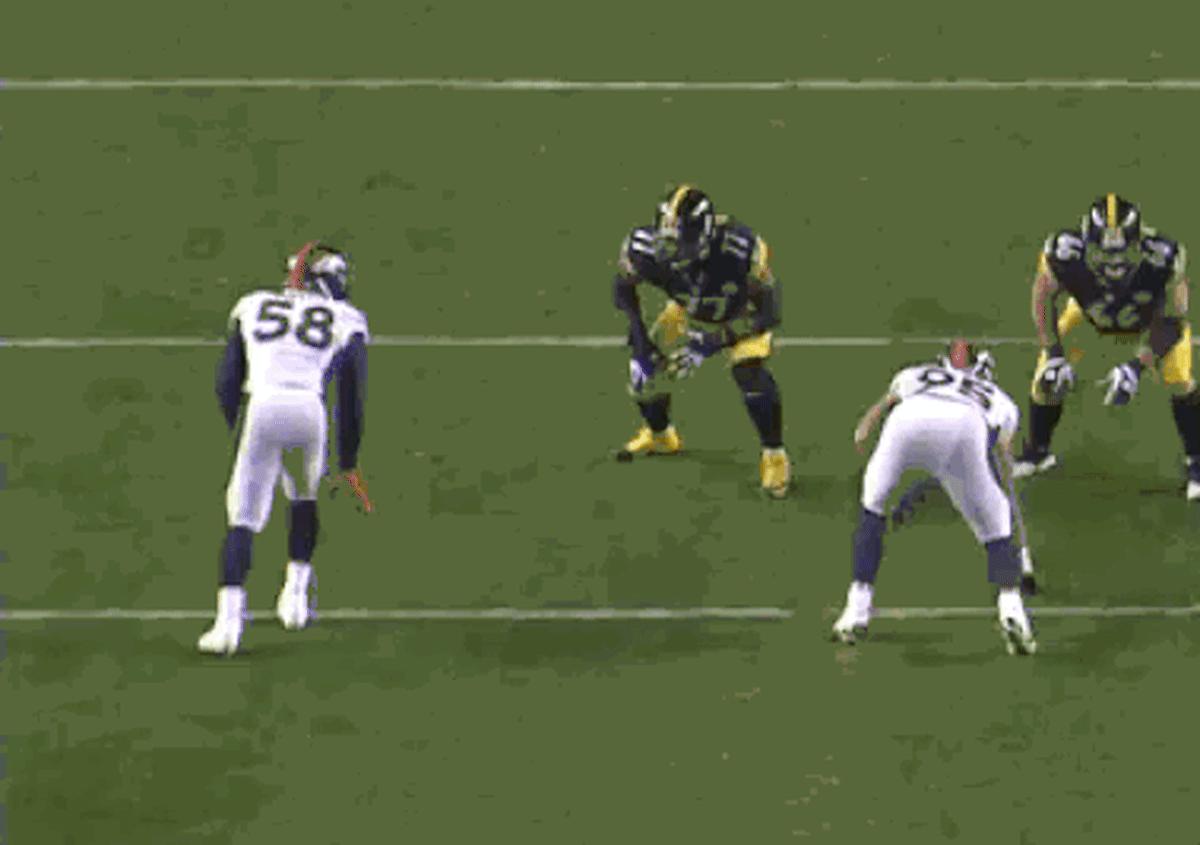
Here’s Schwartz again, fending off a bull-rush will two well-timed fists.
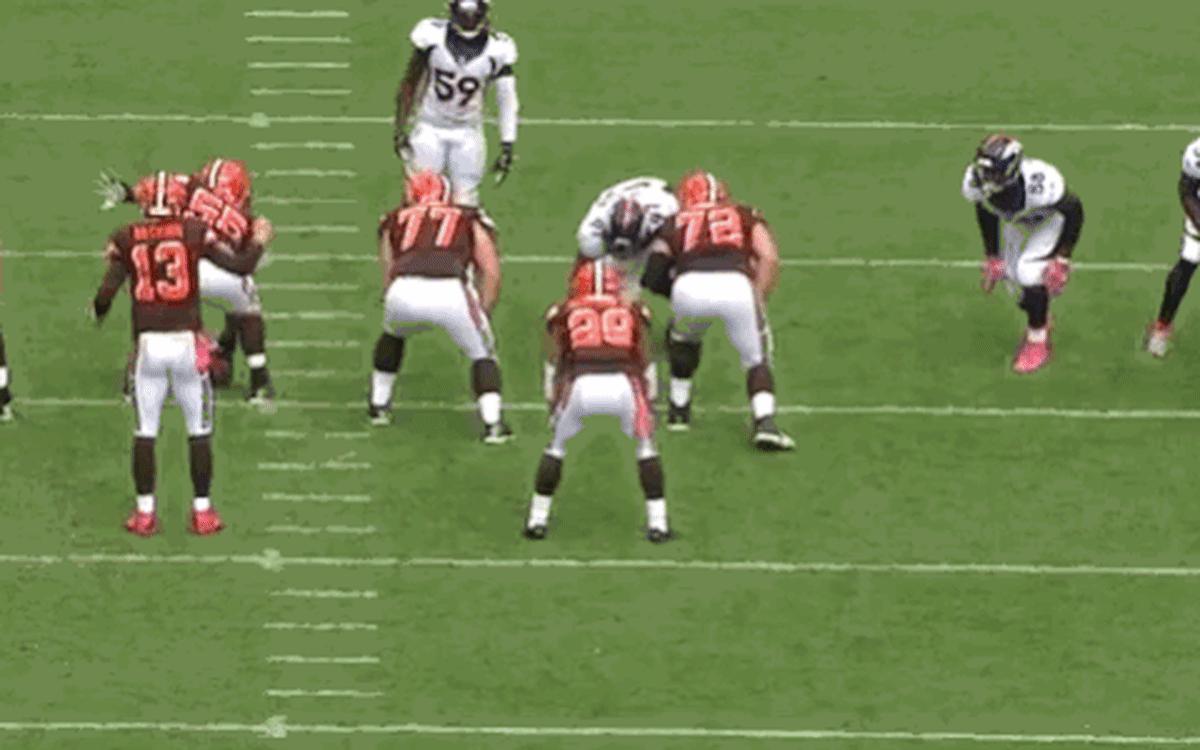
Quick, simple throws
A well-executed punch will prevent Miller from collapsing the pocket for at least the initial burst, which will soon be followed by a second move with a very high success rate. This is where the play-caller and the quarterback come in. The ball has to move fast. There can be no waffling between reads, no seven-step drops or double-move receiving routes. You’ve got to gain yards on second down, or you tee Miller and (when healthy) teammate DeMarcus Ware up for third-and-long, which is when they’re most dangerous. The graphics below show McCown’s and Roethlisberger’s pass placement on plays when Miller was on the field; it’s no secret where they found what success they did—on short routes out toward the numbers.
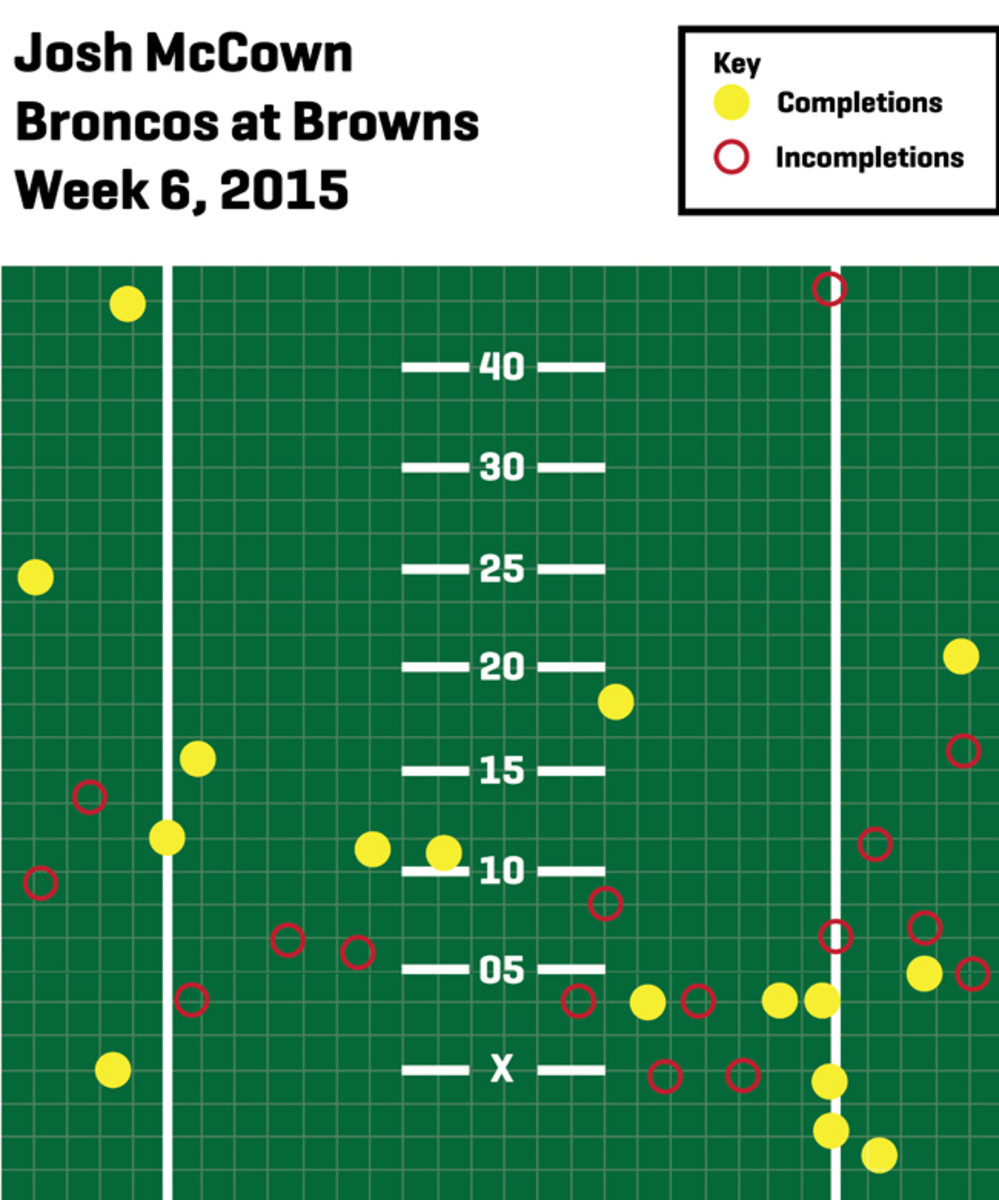
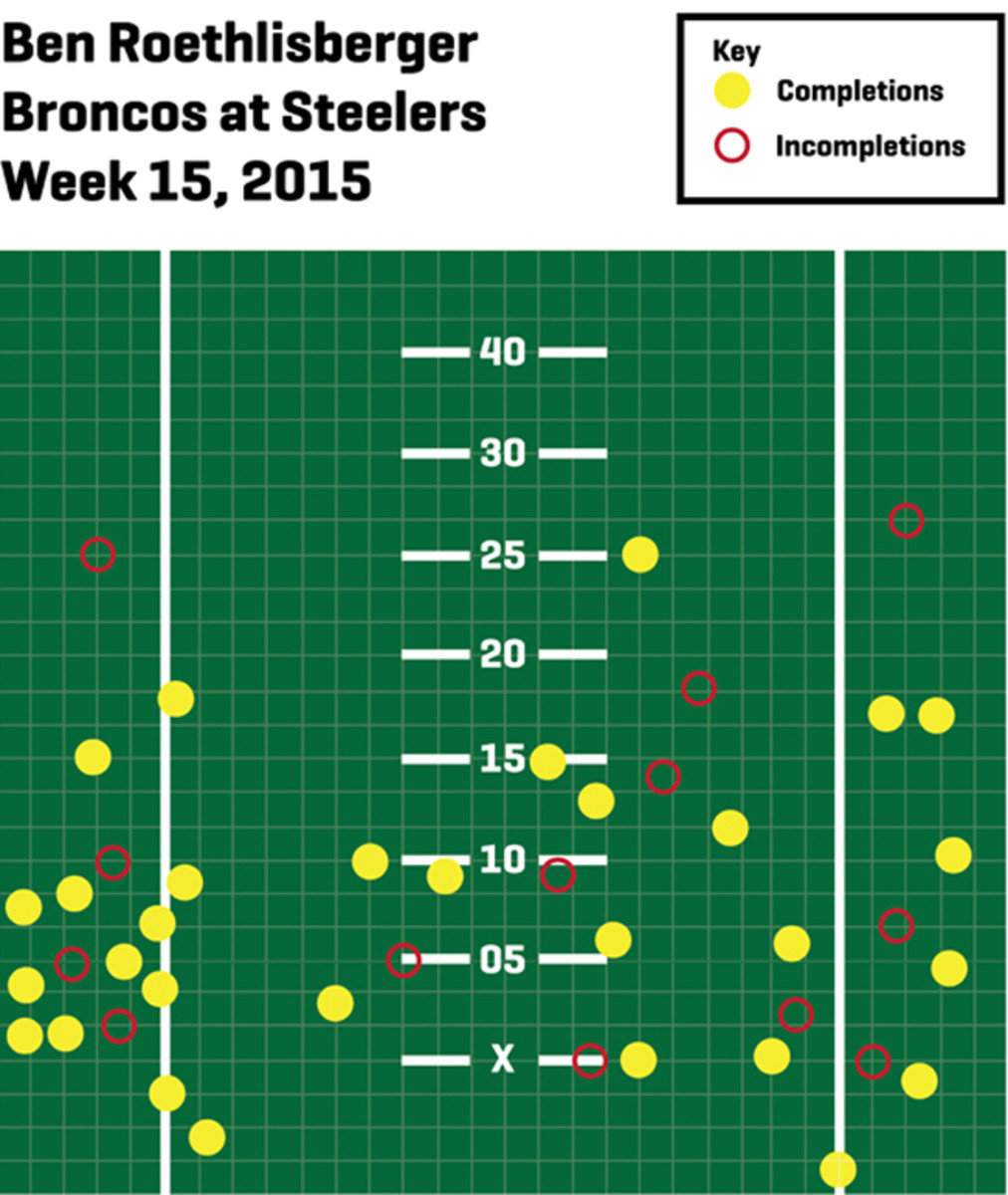
Whether the receivers are shifty Wes Welker types or big bodies cut from Keenan Allen’s mold, they have to get open quickly with room to create yardage after the catch. Offenses choosing to go this route will take their chances with one-on-ones on the fringes against Denver’s outstanding corners, Talib and Chris Harris, rather than attack the middle of the field, where safety T.J. Ward and a host of capable linebackers lurk. Pittsburgh’s Week 15 performance, particularly the frantic drive into field-goal range at the end of the first half, is the ideal illustration of this strategy.
Here’s second-and-12 at the Pittsburgh 24. Ben Roethlisberger pump-fakes a deep ball and throws a quick hitch on the left sideline to Martavis Bryant, who at 6'5", shakes Talib and Shiloh Keo for a 10-yard gain on a pass that travelled three yards downfield.
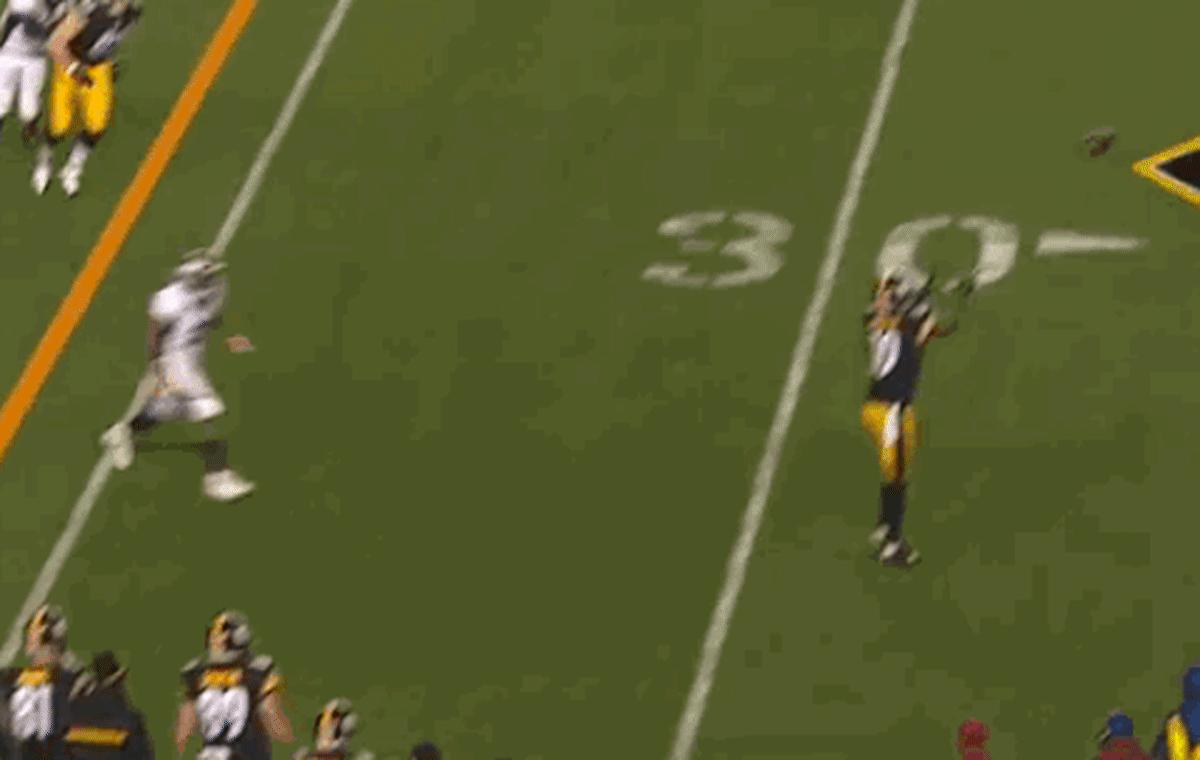
Antonio Brown goes on to make a routine catch on a quick slant on third-and-13 that he takes all the way out of bounds for 16 yards. This is what makes Brown so valuable; not the 60-yard deep routes, but the ultra savvy five-yard scrambles that make the difference between fourth-and-3 with 20 seconds remaining on a running clock and first-and-10 with 30 seconds on a frozen clock.
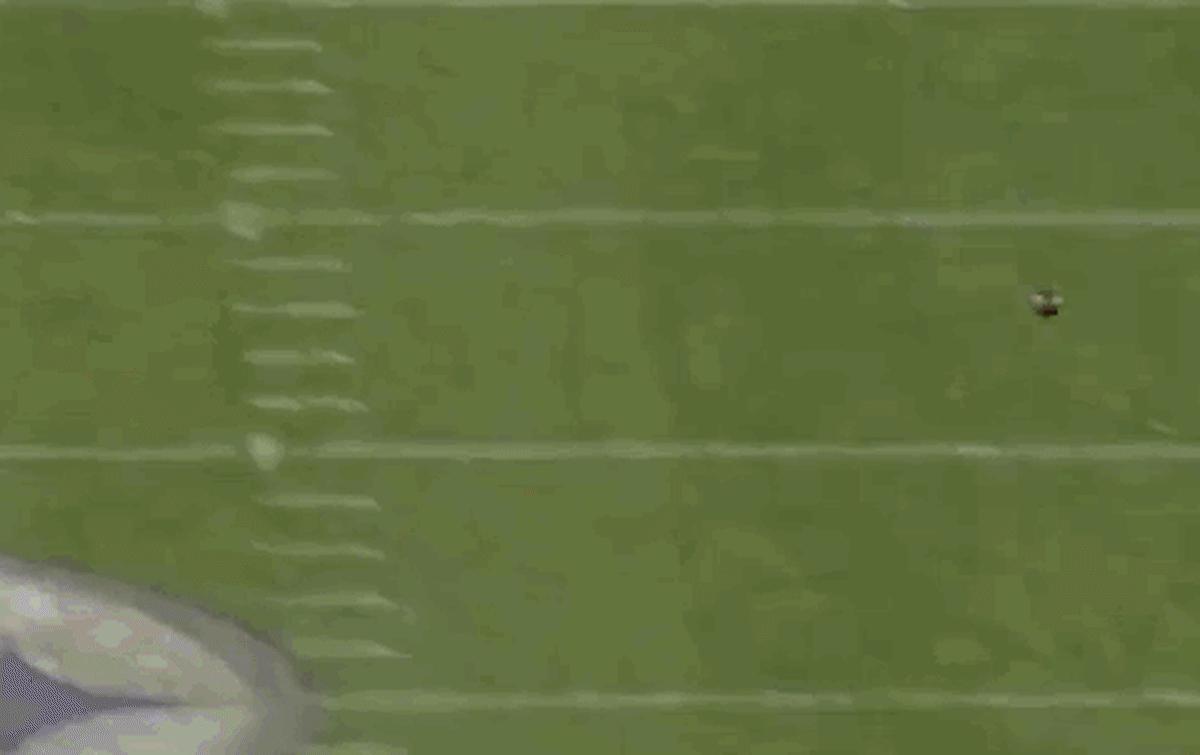
Pocket awareness
Later in the same drive, Broncos defensive coordinator Wade Phillips calls up an overload blitz on Von’s side, which will force a tight end to block Miller. There is no hope for the now-retired Heath Miller in this situation. He will be bull-rushed, and he will give ground fast. That’s where Roethlisberger’s pocket awareness and footwork come into play; not only does he negate Miller’s rush by stepping up, but he takes one final jab step left, faking out Malik Jackson and creating the tiniest window to throw to Markus Wheaton, who makes a spectacular catch.
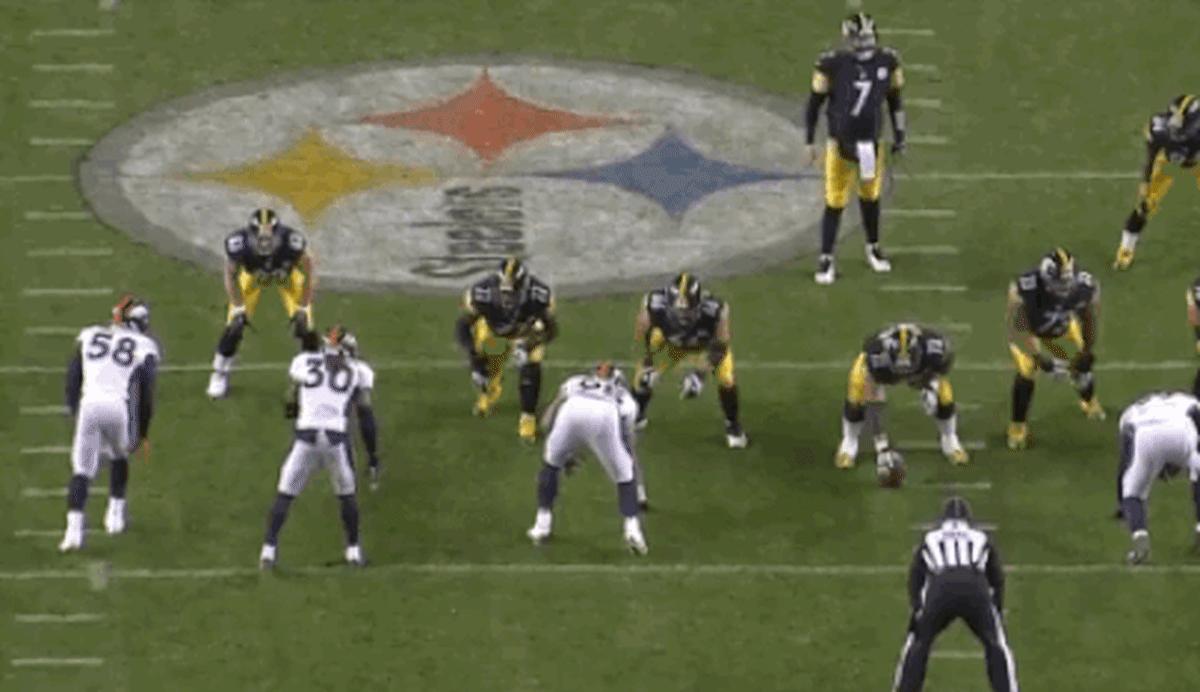
And here’s McCown, on one of the few pass attempts on which he didn’t release within 2.5 seconds of the snap, avoiding Miller’s counterpart Shaquil Barrett on the left side.
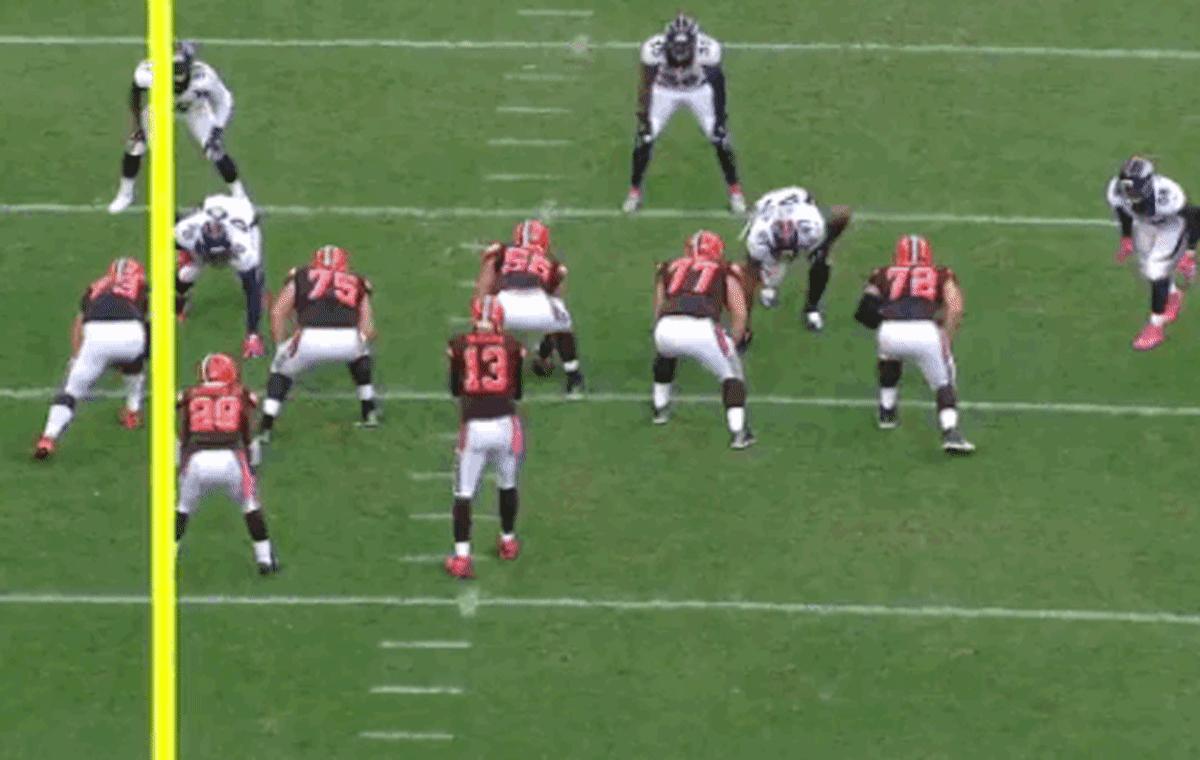
Help!
Von is frustrated now. He cannot run around you and he cannot bull-rush you fast enough to get to the quarterback. The third trick in his bag, nearly as lethal as the first two, is the spin inside. This is impromptu, and he sets it up with four or five hard steps forward, sending most tackles reeling.
In these instances, it’s the center’s and guard’s job to slide protection Von’s way when possible (DeMarcus Ware’s presence on the opposite side often prevents that). As the Browns begin their second-half comeback, here’s center Alex Mack sliding right to block defensive tackle Malik Jackson. In turn, eighth-year veteran guard John Greco dutifully keeps an eye on Miller and shoves him off line just in the nick of time. It’s all made easier by Cleveland’s tight splits between offensive linemen, which is a necessity of the zone running game they employed in 2015.
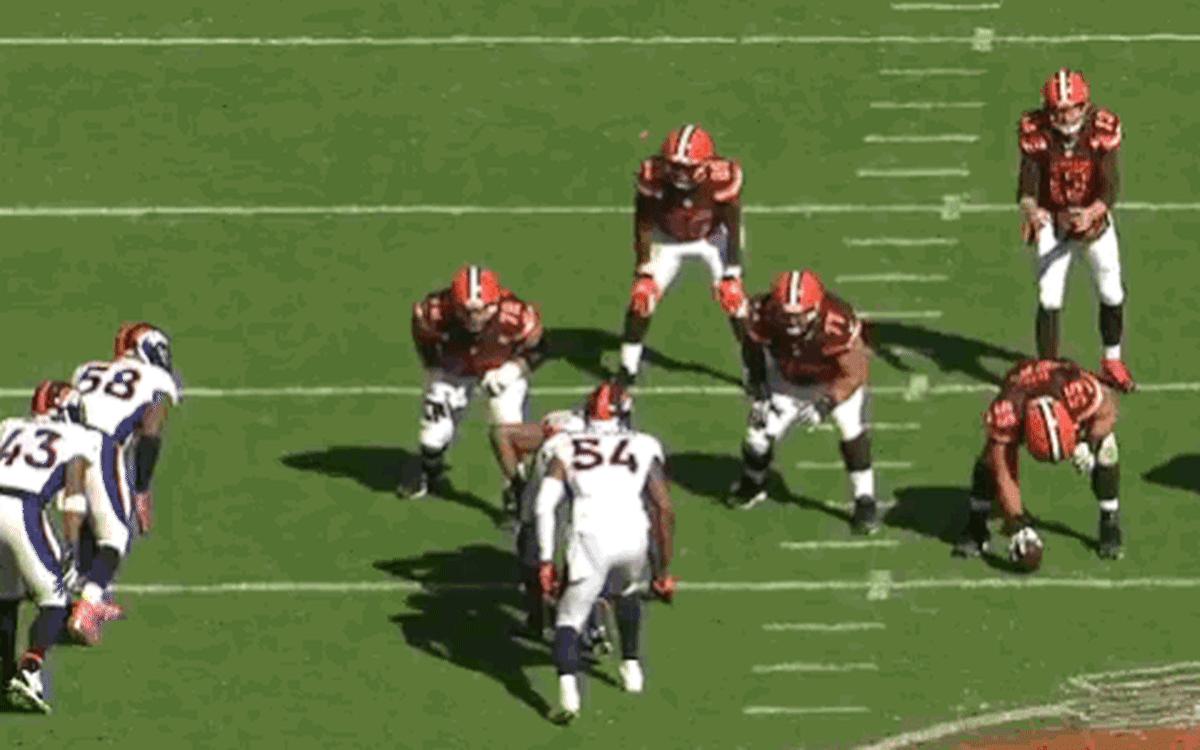
Here’s Pittsburgh doing the same thing, but with wider splits between linemen, which means a taller task for center Cody Wallace. He manages to reach Derek Wolfe (though not without illegally holding him), freeing up David DeCastro, who bails out a stumbling Gilbert and shows Miller what the weight room’s all about. Why, you ask, would Pittsburgh risk interior pressure with such wide splits? Two reasons: 1. They trust their interior linemen to move laterally and anticipate danger. 2. Wider splits mean more distance between Miller, Ware and the quarterback, because both Miller and Ware are tasked with setting the edge in most instances.
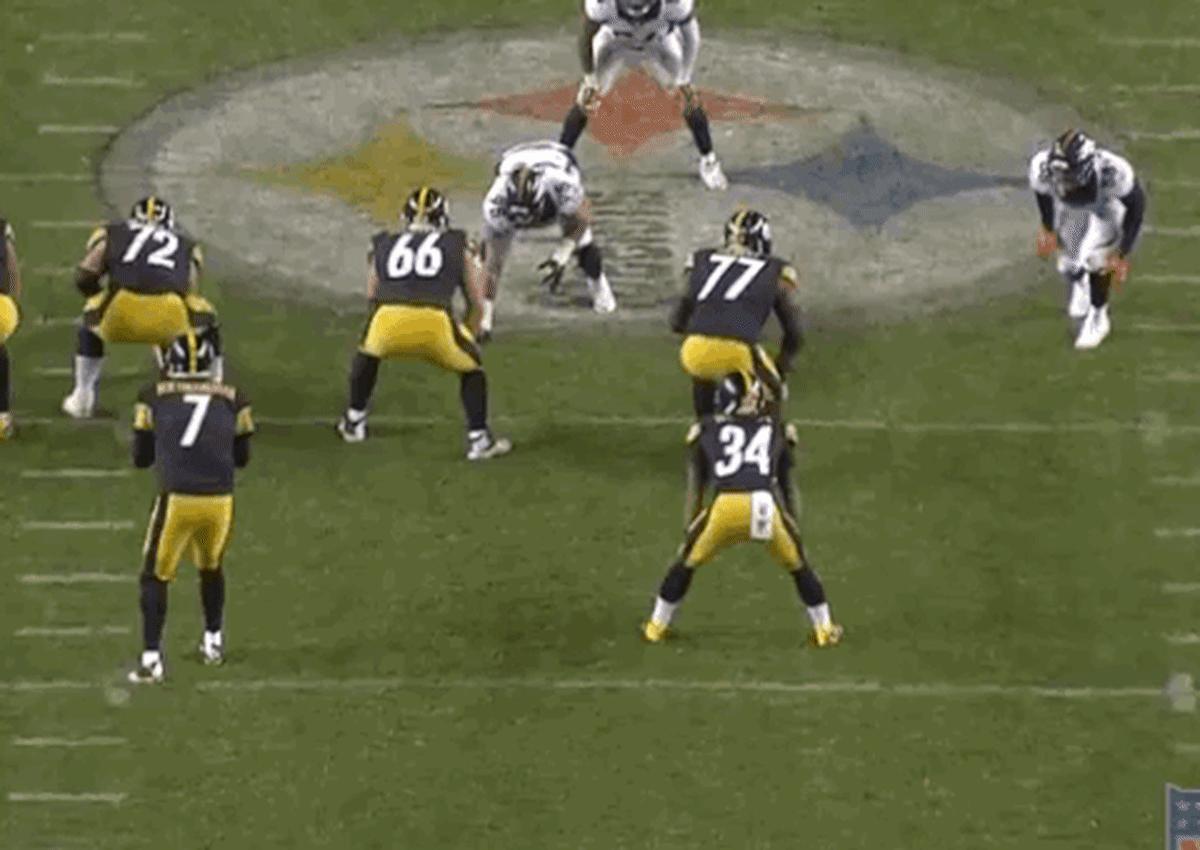
Just when you think you’ve figured it all out and the whole line is clicking, Von and Phillips do not cooperate. Miller will often switch to the right side of the defensive formation (left from the offensive point of view), and go after the left tackle. And in the case of the Steelers and Alejandro Villanueva, that man is going to need some help. Luckily he’s got tailback DeAngelo Williams, a running back who pops people. An ineffectual brush-by will not do the job here. Williams needs to put all of his 210 pounds into Miller’s breast plate, and he does just that.
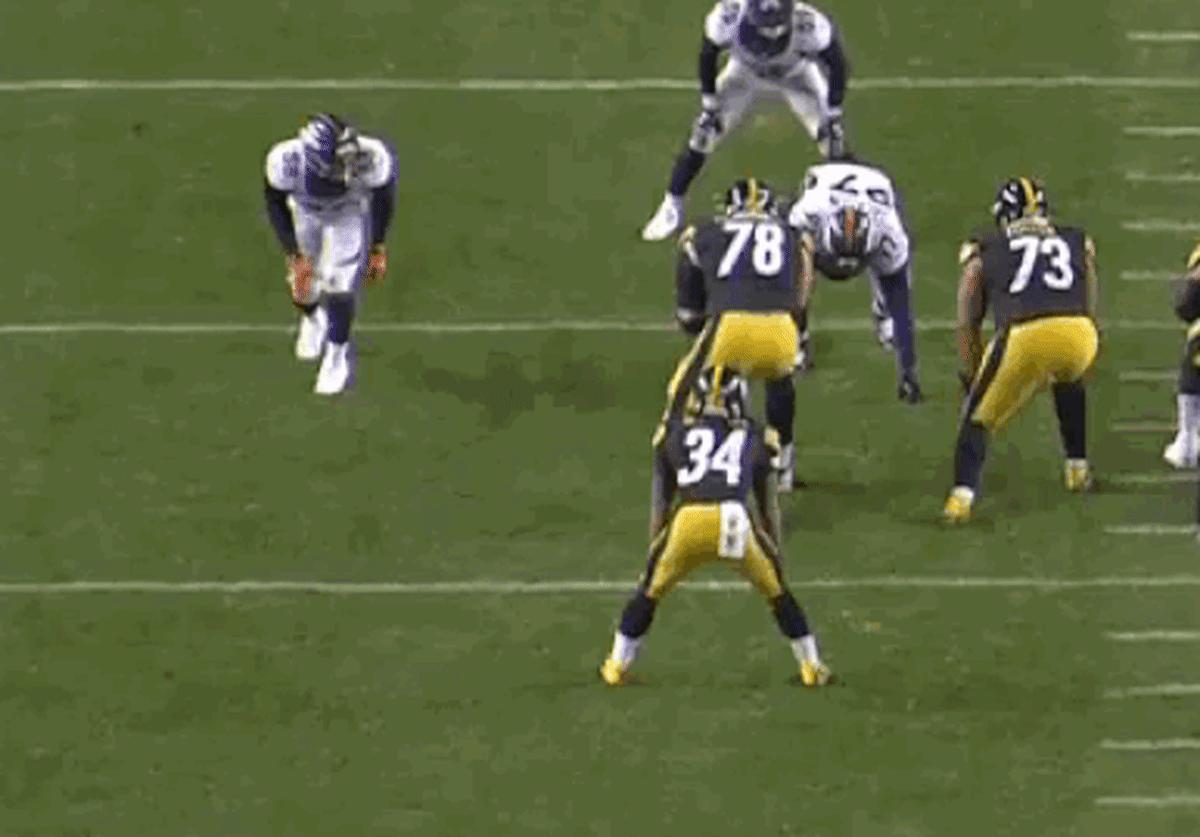
To recap: Draft or sign an elite right tackle, find receivers who can catch and create, build cohesion along the offensive line, and find yourself a quarterback with his wits about him. All seems pretty simple, right?
Here’s the bad news. Despite days and in some cases weeks of preparation, about three or four times per game Von is going to do something special. And there’s really nothing you can do about it.
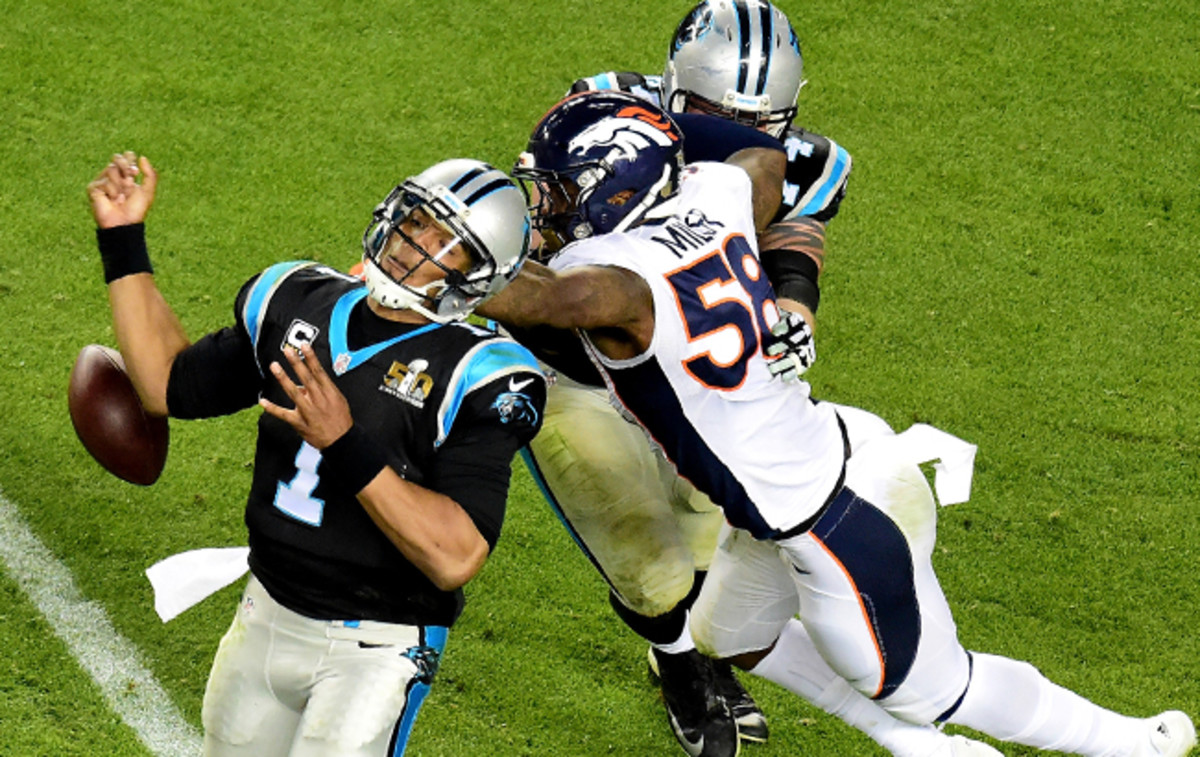
• Question or comment? Email us at talkback@themmqb.com.
